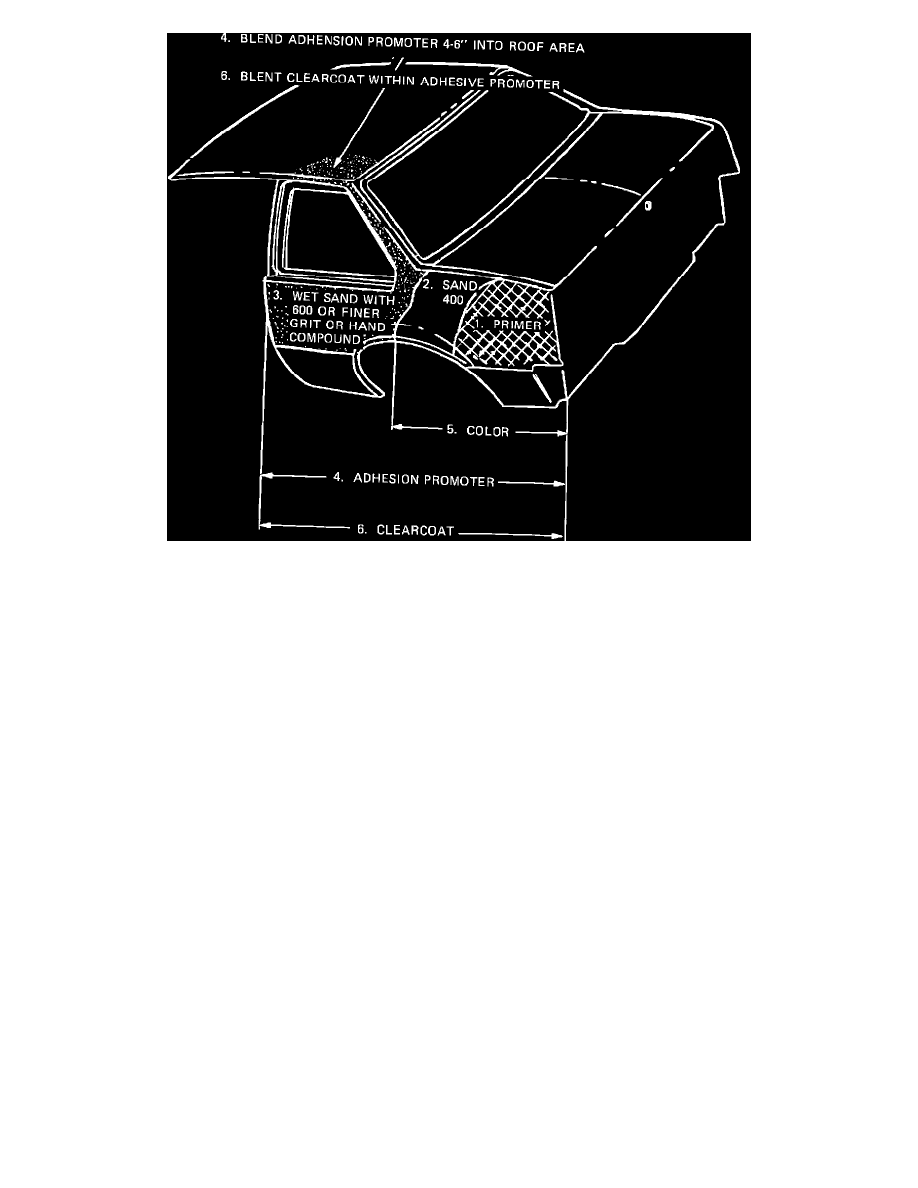Fiero L4-151 2.5L (1985)

FIGURE 1 - TYPICAL SPOT/PARTIAL REPAIR USED ONLY ON QUARTER & ROOFS
c.
Using 50 lbs. air pressure at the gun, spray two medium-wet coats of enamel clear coat mixture. Allow first coat to set-up for 15-20 minutes
before applying the second final coat. Clear coat should be applied over the entire panel wherever possible. When no breaklines are present blend
all spray applications within the adhesion promoter boundry (Figure 1).
Clean spray painting equipment with lacquer thinner immediately after use.
Clearcoat
9B. Lacquer Clearcoat
a.
Reduce clearcoat 125-150% with an extra-slow drying lacquer thinner to the recommended paint viscosity cup reading of the manufacturer
who's paint product you are using.
b.
Spray two medium-wet coats of reduced clear at 35-45 lbs. air pressure at the gun. Allow first coat to flash completely before applying the
second coat. At least two coats must be used. Additional coats may be applied if desired. If additional leveling is desired a final coat of
premixed mist-coat material (clear acrylic and thinner) can be sprayed at 20 lbs. air pressure at the gun. When no breaklines are present,
blend all spray applications within the adhesion promoter (Figure 1). Allow the repair to dry overnight, then rub out with a light-cutting hand
or machine polishing compound.
Flexible Panel Repair System
Procedure - Full Panel
Full panel repairs must be performed, spot repairs are not recommended.
CAUTION: There are a number of flexible paint systems available for service use: however, many required additives containing isocyanates. It is
essential that all recommendations and warnings listed on the container label for materials selected be followed.
It is mandatory that adequate respiratory protection be worn. Examples of such protection are: 3-M models #6984 and #6986 disposable respirators.
Such protection should be worn during the entire paint process. Persons with respiratory problems, or those allergic to isocyanates must not be exposed
to isocyanate vapors or spray mist.
1.
Flexible Undercoat Requirements
